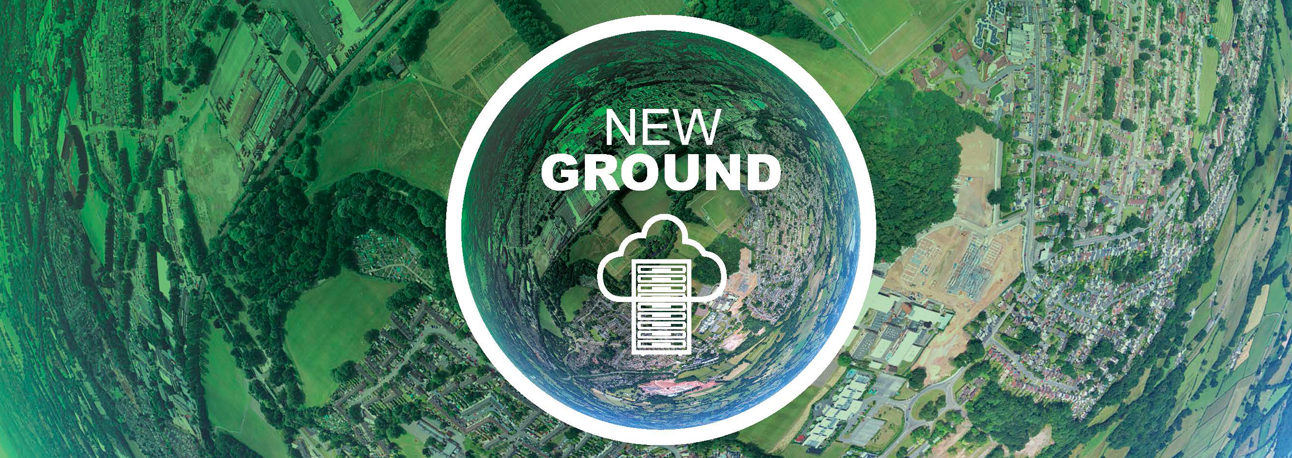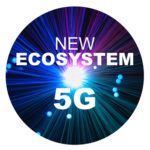By Frederik Simoens, CTO, ST Engineering iDirect
In this blog, Frederik Simoens, our CTO, talks about what we are terming “New Ground” – transformations that are taking place on the ground – to answer the question “is the ground segment ready for the new space revolution”? He’ll also explore how we now fit into a new ecosystem that will see the convergence of technologies making connectivity more accessible than it’s ever been.
The satellite industry is on the cusp of the biggest evolution in its history. Innovations in space are making satellites more powerful. On the ground, the imminent rollout of 5G networks is set to take us on a new journey, in a new direction. The foundations for this are already being laid. As a leader in satellite ground segment we see it as our role to enable the realization of this new era in connectivity.
In order to start the transformation, as an industry we need to understand the changes that are occurring with respect to 5G and NewSpace to accelerate and ensure a successful transition.
NewSpace – making satellites more powerful and flexible
The NewSpace movement is having a profound effect on the satellite sector. At present, the entire space industry is moving from traditional GEO satellites to a more hybrid mix of GEO, MEO and LEO satellites, from HTS to VHTS satellites and Non-Geostationary Satellite Orbits (NGSOs).
In order to unlock the capabilities that NewSpace offers, ground systems must be equally dynamic
We’re moving from gigabit to terabit level capacity on the constellation level. At the same time, satellite capabilities are changing. Where they were previously designed to fulfil a specific purpose with beams covering certain regions with pre-determined throughput, they are now becoming increasingly flexible with completely dynamic beams, opening up new possibilities and creating greater flexibility. The fact that we are moving towards software-defined standardized payloads means that operators don’t need to lock the satellite designs upfront. These new flexible payloads can be launched and configured later to a specific use case or reconfigured depending on demand. This obviously takes away a great deal of business risk for the operator. In order to unlock the capabilities that NewSpace offers, ground systems must be equally dynamic and tightly integrated to dynamically allocate space resources as and where they are needed.
 The new 5G ecosystem will transform the communications sector
The new 5G ecosystem will transform the communications sector
The new 5G ecosystem has context in the fourth industrial revolution (also known as Industry 4.0), that will rely on the implementation of smart technologies. This innovation is rooted in an increased capability to communicate and to connect endpoints and players in Industry 4.0 which introduces concepts such as smart networks, artificial intelligence (AI) and the interconnection of all kinds of systems. 5G is the driver of the convergence that we are starting to see taking place. To integrate with this new 5G ecosystem, the ground segment needs to move towards a standards-based, fully integrated, end-to-end, cloud-based service delivery driven by three key technology enablers – automation, virtualization and orchestration.
“New Ground” – Embracing the tech enablers
These changes in how things are connected, and the convergence of access technologies have huge implications for the satellite sector – in terms of ground segment as well as space segment. Both are moving away from standalone networks, meaning typical VSAT systems that have always been installed and configured more or less independently from other terrestrial networks. What we see now is a shift for satellite to blend in seamlessly with every other type of access technology to create full interoperability within the end-to-end converged 5G network. Satellite connectivity is just one of the many ways to communicate in this 5G ecosystem. The other important point to note is that the ground segment is embracing virtualization technologies so we can carry out the modulation and processing within a fully virtual infrastructure. We are moving away from a paradigm where everything is configured upfront, to a more orchestrated means of service delivery where services and infrastructure are created at the moment they are needed and that can adapt and change according to demand, without the need for reconfiguration.
Software defined satellites require software defined ground infrastructure
The means to successful integration of satellite into the converged 5G network lies with the ground segment which will need to fully adopt the automation and orchestration that is being standardized by the terrestrial industry. Adoption of this technology will allow the ground segment to deliver the required connectivity to the end user in a frictionless manner irrespective of the application, region or location. The platform should be completely agnostic from the application that runs over it. On top of this, it must deliver the efficiency, performance and scale that’s needed to leverage all the new capabilities that exist and the new scale and throughput enabled by the evolutions in space. Software defined satellites require software defined ground infrastructure.
How are we pioneering the change?
It’s a good question and one that we can address with our recent selection by SES to provide the high-performance ground infrastructure for O3b mPOWER, SES’s MEO constellation. This constellation promises to transform how traditional satellite services are delivered – and all of the concepts I talked about above are brought to life in this example.
Our dynamic ground system, combined with SES’s O3b mPOWER satellites and their differentiated resource management capability, enables dynamic allocation of their MEO resources. This is facilitated through our highly flexible, virtualized hub and baseband. We are enabling end-to-end service orchestration and automation which results in seamless integration into the overall satellite and terrestrial hybrid networks based on open architectures and standardized platform APIs. This reduces operational complexities and ensures that services are implemented in an automated, expedient and seamless manner, as needed.
Illustrated here, we’re matching the innovation happening in space on the ground. We are preparing for the integration of satellite into the wider 5G ecosystem. We are leveraging the core technologies such as waveforms, cross layer optimization and network management that already exist on our platform to enable the agility and flexibility that this new era will require.
With our strong heritage of pushing boundaries and our pioneering nature, we’re taking ground technology to a completely new level. With our New Ground philosophy and innovation, we are ready to become a critical part of this ecosystem.
Your opportunity to find out more
Watch Frederik’s webinar presentation: ‘Is the Ground Segment Ready for the NewSpace Revolution?’ during APSCC webinar here.
To read more about our selection for O3b mPOWER, read our full announcement here and Via Satellite’s exclusive article with Stewart Sanders, SES executive vice president of Technology, and O3B mPOWER program and Thomas Van den Driessche, President and CCO, ST Engineering iDirect here.

 The new 5G ecosystem will transform the communications sector
The new 5G ecosystem will transform the communications sector